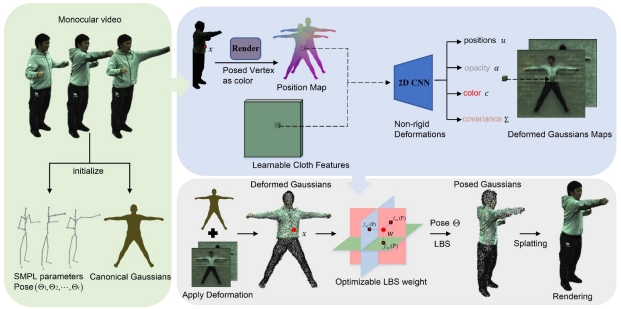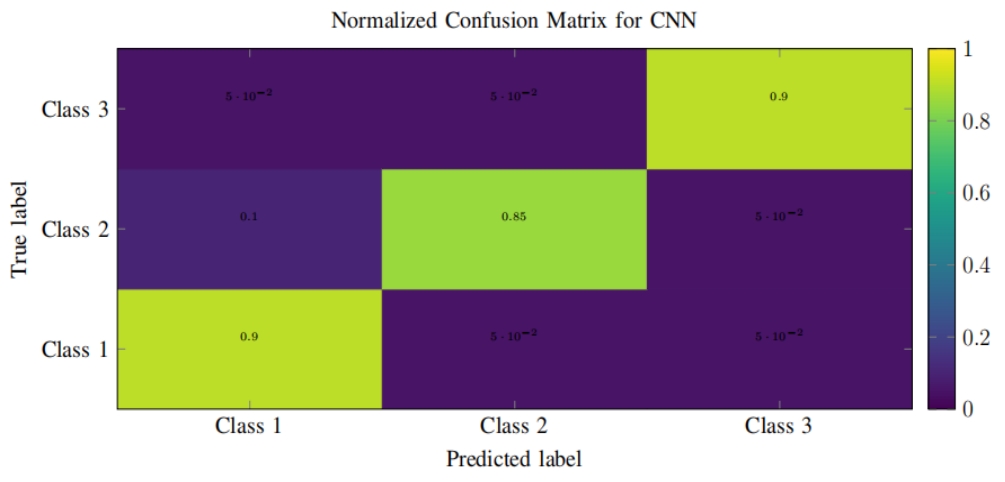
Asia Pacific Academy of Science Pte. Ltd. (APACSCI) specializes in international journal publishing. APACSCI adopts the open access publishing model and provides an important communication bridge for academic groups whose interest fields include engineering, technology, medicine, computer, mathematics, agriculture and forestry, and environment.



Use of video games in elementary school: A systematic review
Vol 3, Issue 2, 2022
Download PDF
Abstract
It shows the results of a research developed at the University of La Sabana, with the aim of identifying the uses that have been given to video games in primary education in the world. A systematic review of literature published in scientific journals between 2000 and 2019 was carried out. The results show that the area of greatest use of video games is natural sciences, and that their use favors interaction and innovation in educational practices.
Keywords
References
- Boude Figueredo OR, Andrea Sarmiento J. The challenge of training university professionals to integrate mobile learning. Educación Médica Superior 2017; 31(1): 61–77.
- Castells M. The information age: Economy, society and culture. 3rd ed. Tres Cantos: Siglo XXI; 2004.
- Mattelart A. Historia de la sociedad de la información (Spanish) [History of the information society]. Barcelona: Paidós; 2007.
- Boude O. Caracterización de los usos de los dispositivos móviles en el proceso de formación (Spanish) [Characterization of the uses of mobile devices in the training process]. XV Encuentro internacional Virtual Educa Perú; 2014 Jun 9–13; Lima. Washington D.C.: Secretaría General de Virtual Educa; 2014.
- Area Moreira M. Towards the digital university: Where are we and where are we going? Revista Iberoamericana de Educación a Distancia 2018; 21(2): 25–30. doi: 10.5944/ried.21.2.21801.
- Sandoval Forero CG, Triana Sánchez A. The videogame as a prosocial tool: Implications and applications for reconstruction in Colombia. Análisis Político 2017; 30(89): 38–58.
- Gee JP. Deep learning properties of good digital games: How far can they go? Serious games. London: Routledge; 2009. p. 89–104.
- Felicia P. Videojuegos en el aula. Manual para docents (Spanish) [Video games in the classroom. Manual for teachers]. Bruselas: European Schoolnet; 2009.
- Starks K. Cognitive behavioral game design: A unified model for designing serious game. Frontiers in Psychology 2014; 5: 28. doi: 10.3389/fpsyg.2014.00028.
- Fink A. Conducting research literature reviews: From the internet to paper. New York: Sage Publications; 2014.
- Conn VS, Isaramalai S, Rath S, et al. Beyond MEDLINE for literature searches. Journal of Nursing Scholarship 2003; 35(2): 177–182.
- Braun V, Clarke V. Using thematic analysis in psychology. Qualitative Research in Psychology 2006; 3(2): 77–101.
- Bakker M, Van Den Heuvel-Panhuizen M, Robitzsch A. Effects of playing mathematics computer games on primary school students multiplicative reasoning ability. British Journal of Educational Technology 2015; 47(4): 633–648.
- Capell Masip N, Tejada Fernández J, Bosco A. Videogames as means of learning: A case study in maths in primary education. Pixil-Bit. Revista de Medios y Educación 2017; (51): 133–150.
- Corral ME. El uso de los videojuegos como recurso de aprendizaje en educación primaria y Teoría de la Comunicación (Spanish) [The use of video games as a learning resource in primary education and Communication Theory]. Madrid: Revista académica de la Federación Latinoamericana de facultades de comunicación social. Universidad Complutence de Madrid; 2009.
- Macías Gutiérrez G, Quintero Zazueta R. Los videojuegos como una alternativa para el estudio y desarrollo de la orientación espacial (Spanish) [Video games as an alternative for the study and development of spatial orientation]. Investigación en Educación Matemática XV 2011; 405–416.
- Plass-Nielsen J, Nielsen OBW (editors). How to enhance interest in mathematics by using game-based learning. Paper presented at the Proceedings of the 13th International Conference on Game Based Learning, ECGBL 2019; 2019 October 3–4; Odense: Academic Conferences and Publishing International; 2019. p. 1024–1027. doi: 10.34190/GBL.19.073.
- Villacís CJ, Fuertes WM, Bustamante CA, et al. Optimización del juego tres en raya con niveles de dificultad utilizando heurística de inteligencia artificial (Spanish) [Optimization of the tic-tac-toe game with difficulty levels using artificial intelligence heuristics]. Novas Prácticas em informacao e conhecimento,Universidade Federal do Paraná 2015; 3(2): 95–106.
- Del Moral Pérez M, Fernández García LC. Video games in the classrooms: Implications of a disruptive innovation to develop the Multiple Intelligences. Revista Complutense de Educación 2017; (26): 97–118.
- Zhao Z, Linaza JL. Relevance of videogames in the learning and development of young children. Electronic Journal of Research in Educational Psychology 2015; 13(2): 301–318.
- Saorin JL, Cantero JDLT C, Melian D, et al. Blokify: Juego de modelado e impresión 3D en tableta digital para el aprendizaje de vistas normalizadas y perspectiva. Digital Education Review 2015; 27: 105–121. doi: 10.1344/der.2015.27.105-121.
- Bokolas V, Panagouli D (eidtors). Between “fortnite” and “civilization”: Digital games and historical-cultural education. 12th European Conference on Games-Based Learning; 2019 Oct 3–4; Provence: Sophia Antipolis; 2019. p. 74–81. doi: 10.34190/GBL.19.160.
- Evaristo Chiyong I, Navarro Fernández R, Vega Velarde V, et al. Uso de un videojuego educativo como herramienta para aprender historia del Perú (Spanish) [Use of an educational video game as a tool for learning Peruvian history]. RIED: Revista Iberoamericana de EducaciÓn a Distancia 2016; 19(2): 35–52. doi: 10.5944/ried.19.2.15569.
- Legerén Lago B, Doval Ruíz MI. We are European Citizens. Playing to learn to be European. Education in the Knowledge Society: EKS 2015; 2(16): 49–68.
- Marín Díaz V, Sampedro Requena BE. Article innovation in primary education classroom with GT 6. Innoeduca: International Journal of Technology and Educational Innovation 2016; 2(1): 13–19. doi: 10.20548/innoeduca.2016.v2i1.1061.
- Sáez López JM, Cózar Gutiérrez R. Programación visual por bloques en educación primaria: Aprendiendo y creando contenidos en ciencias sociales (Spanish) [Visual programming by blocks in primary education: Learning and creating content in social sciences]. Revista Complutense de Educación. Universidad Complutense de Madrid España 2017; 28(2): 409–426.
- Lima L, Torres D, Ramírez E (editors). Un juego serio para la preservación de la fauna silvestre en peligro de extinción en Venezuela (Spanish) [A serious game for the preservation of endangered wildlife in Venezuela]. Conferencia Nacional de Computación, Informática y Sistemas (CoNCISa); 2015 Oct 28–30. Valencia: Universidad de Carabobo; 2015. p. 50–60.
- Lin Y, Hsieh Y, Hou H, et al. Exploring students’ learning and gaming performance as well as attention through a drill-based gaming experience for environmental education. Journal of Computers in Education 2019; 6(3): 315–334. doi: 10.1007/s40692-019-00130-y.
- Zarzuela MM, Pernas FJD, Barroso Martinez L, et al. Mobile serious game using augmented reality for supporting children´s learning about animals. Procedia Computer Science 2013; (25): 375–381. doi: 10.1016/j.procs.2013.11.046.
- Solano NL, Santacruz Valencia LP. Videojuegos como herramienta en Educación Primaria: Caso de estudios con eAdventure (Spanish) [Videogames as a tool in primary education: Case studies with eAdventure]. TE&ET Revista Iberoamericanade Tecnología en Educación y Educación en Tecnología 2016; (18): 101–112. doi: 10.24215/18509959.0.p.%20101-112.
- Del Pozo M (editor). Videojuegos y educación ambiental en educación primaria (Spanish) [Videogames and environmental education in primary education]. III Congreso Internacional omunicación 3.0: Las Media Enterprises y las Industrias Culturales, Investigara la Comunicación y los Nuevos Medios. 2012 Oct 10–11; Salamanca: Universidad de Salamanca; 2012. p. 219–304
- Rivera JP, Suarez JP. Effect of the “Blue Sky” video game on children of primary school for learning solid waste management. Aportes Universitarios Universidad Peruana Unión 2015; 5(1): 163–172.
- Checa RM. Developing skills in digital contexts: Video games and films as learning tools at primary school. Games and Culture 2016; 11(5): 463–488.
- Lacasa P, Martinez R, Méndez L. Developing new literacies using commercial videogames as educational tools. Linguistics and Education 2008; 19(2): 85–106.
- Valderrama Ramos JA. Los videojuegos: Conectar al alumno para aprender (Spanish) [Video games: Connecting the student to learn]. Sinética Revista Electrónica de Educación 2012; 39: 1–15.
- Berríos-Valenzuela L, Buxarrais-Estrada MR, Garces MS. ICT use and parental mediation perceived by chilean children. Comunicar 2015; 23(45): 161–168.
- Chiazzese G, Fulantelli G, Pipitone V, et al. Engaging primary school children in computational thinking: Designing and developing videogames. Education in the Knowledge Society: EKS 2018; 19(2): 63–81.
- Costa C, Tyner K, Henriques S, et al (editors). Digital game creation for media and information literacy development in children. EDULEARN 17 Proceedings; 2017 Jul 3–5; Barcelona. Barcelona: Academic Conferences & Publishing; 2017. p. 122–121.
- Iten N, Petko D. Learning with serious games: Is fun playing the game a predictor of learning success? British Journal of Educational Technology 2016; 47(1): 151–163. doi: 10.1111/bjet.12226.
- Drew D, Bogost I. Videogames and the future for education. On the Horizon 2005; 13(1): 119–125.
- Lárez Marcano BE. Competencias digitales y videojuegos online (Spanish) [Digital skills and online video games]. DIM: Didáctica, Innovación y Multimedia 2010; (19): 1–11.
- Lárez Marcano BE. Emotional stimulation of video games: Effects in the learning processes. Teoría de la Educación. Educación y Cultura en la Sociedad de la Información 2006; 7(2): 128–140.
- Del Moral Pérez ME, García LCF, Guzmán-Duque AP. Game to learn project: Game-based learning to strengther logical-mathematical, naturalist and linguistic intelligences in primary school. Píxel-Bit. Revista de Medios y Educación 2016; (49): 173–193.
- Marín Díaz V. Trabajar la educación primaria e-inclusiva desde los videojuegos (Spanish) [Working on e-inclusive primary education through video games]. Revista Eduweb 2010; 4(2): 9–23.
- Rodriguez PY, Verdecia RR, Capote AF, et al. Estudio de los videojuegos en Cuba (Spanish) [Study of educational video games in Cuba]. Gemany: Desarrollo de Aplicaciones Educativas; 2015. doi: 10.13140/RG.2.1.3338.9047.
- Azorín Delegido JM. The musical videogame. A resource for music education in elementary school? Ensayos: Revista de la Escuela Universitaria de Formación del Profesorado de Albacete 2014; 29(2): 19–36.
- García Rodríguez F, Raposo Rivas M. Trabajando con videojuegos en el aula una experiencia con wii music (Spanish) [Working with video games in the classroom: An experience with Wii music]. Tendencias Pedagógicas 2013; (22): 45–58.
- Ahijado SR, Botella Nicolás AM. Video games and musicomovigrams. Innovation and resources in elementary education tools. Opción 2015; 31(1): 609–619.
- Ahijado SR, Botella Nicolás AM. La integración del videojuego educativo con el floklore. Una propuesta de educación en educación primaria (Spanish) [The integration of the educational video game with folklore. A proposal of application in primary education]. Revista Electrónica Interuniversitaria de formación del profesorado (Continuacion de la antigua revista de escuealas normales) 2016; 19(3): 115–121. doi: 10.6018/reifop.19.3.267281.
- Yagüe Sebastián MP, Yagüe Sebastián MM, Lecuona AA, et al. Los videojuegos en el tratamiento fisioterapéutico de la parálisis cerebral (Spanish) [Video games in the physiotherapeutic treatment of cerebral palsy]. Asociación Española de Fisioterapeutas. España 2016; 38(6): 295–302. doi: 10.1016/j.ft.2015.11.005.
- Straker L, Howie E, Smith A, et al. A crossover randomised and controlled trial of the impact of active video game on motor coordination and perception of physical ability in children at risk of developmental coordination disorder. Human Movement Science. Physiotherapy and Exercise Science, Curtin University, Australia 2015; (42): 146–160.
- Granados, LS, Mendoza JFM. Escenarios virtuales para apoyar el desarrollo de destrezas en niños con dificultades de lateralidad (Spanish) [Virtual scenarios to support the development of skills in children with laterality difficulties]. Educación y desarrollo social 2012; 6(1): 119–133.
- Jiménez JE, Rojas E. Effects of Tradislexia videogame on phonological awareness and word recognition in dyslexic children. Psicothema 2008; 20(3): 347–353.
- Rojas Rodriguez E. Diseño y Validación de un Videojuego para el tratamiento de la dyslexia (Spanish) [Design and validation of a video game for dyslexia treatment] [PhD thesis]. San Cristóbal de La Laguna: Universidad de la Laguna; 2008.
- Gaggi O, Palazzi CE, Ciman M, et al. Serious games for early identification of developmental dyslexia. Computers in Entertainment (CIE) 2017; 15(2): 1–24.
- Brenes-Peralta C, Pérez-Sánchez R. Empatía y agresión en el uso de videojuegos en niños y niñas (Spanish) [Empathy and aggression in the use of video games by children]. Revista Latinoamericana de Ciencias Sociales, Niñez y Juventud 2015; 13(1): 183–194.
- Filella G, Cabello E, Pérez-Escoda N, et al. Evaluation of the Emotional Education program “Happy 8-12” for the assertive resolution of conflicts among peers. Electronic Journal of Research in Educational Psychology 2016; 14(3): 582–601. doi: 10.14204/ejrep.40.15164.
- Kang Y, Chang Y. Using a motion-controlled game to teach four elementary school children with intellectual disabilities to improve hand hygiene. Journal of Applied Research in Intellectual Disabilities 2019; 32(4): 942–951. doi: 10.1111/jar.12587.
- Kang Y, Chang Y. Using game technology to teach six elementary school children with autism to take a shower independently. Developmental Neurorehabilitation 2019; 22(5): 329–337. doi: 10.1080/17518423.2018.1501778.
- Villaseñor AY, Sánchez EM, Santana PC, et al. Juego serio con interacción natural para la activación física en niños de primaria (Spanish) [Serious play with natural interaction for physical activation in elementary school children]. Congreso Internacional de las Ciencias de la Educación. Universidad de Colima; 2013. p. 545–552.
- López-Martínez J, Miranda-Palma C, Gonzalez S. A methodology for the analysis and design of a serious video game to combat childhood obesity in the State of Yucatan. Revista Iberoamericana para la Investigación y el Desarrollo Educativo 2013; 2(10).
- Podolskiy AI, Druzhinenko DA, Podolskiy OA, et al. Using videogames to treat childhood obesity. Psychology in Russia 2014; 7(4): 51.
- Petros P, Georgios F (editors). Educational applications of serious games: The case of the game “Food Force” in primary education students. In: Proceedings of the 5th European Conference on Games Based Learning (ECGBL 2011); 2011 Oct 20–21; Athens. Athens: Academic Conferences Ltd.; 2011. p. 476–485.
- Domínguez Garrido C, Saéz López JM. Pegagogical integration of the application Minecraft EDU in elementary school: A case stud. Revista de Medios y Educación, Universidad de Sevilla 2014; (45): 95–110.
- Obikwelu C, Read J, Sim G. The serious game approach to problem-based learning for the dependent learner. Proceedings of the European Conference on Games Based Learning 2012; 1(2): 356–363.
- Frossard F. Fostering teachers’ creativity through the creation of GBL scenarios [PhD thesis]. Barcelona: Universidad de Barcelona; 2013.
- Torrente J, Moreno-Ger, P, Martínez-Ortiz I, et al. Integration and deployment of educational games in e-learning environments: The learning object model meets educational gaming. Educational Technology & Society 2009; 12 (4): 359–371.
- Salvador-Herranz G, Pérez D, Ortega M, et al. Evaluation of an Augmented Reality enhanced tabletop system as a collaborative learning tool: A case study on mathematics at the primary school. Netherlands: The Eurographics Asssociation; 2012. doi: 10.2312/conf/EG2012/education/009-016.
- Beavis C, Muspratt S, Thompson R. ‘Computer games can get your brain working’: Student experience and perceptions of digital games in the classroom. Learning, Media and Technology 2014; (40): 21–42. doi: 10.1080/17439884.2014.904339.
- Moreno Moreno WJ, Barriga Velázquez DJ. Los videojuegos como mediación pedagógica para la enseñanza de la lengua castellana y potenciar habilidades comunicativas en los estudiantes de grado quinto del colegio José Francisco Socarrás (Spanish) [Video games as a pedagogical mediation for the teaching of Spanish language and to enhance communicative skills in fifth grade students of the José Francisco Socarras School] [Bachelor’s thesis]. Bogotá: Repositorio Universidad Javeriana; 2011.
- Legarda DM, Vilanova PY, Navarra PL. Uso de un videojuego inmersivo 3D para el aprendizaje del español: El caso de “Lost in La Mancha” (Spanish) [Use of an immersive 3D video game for learning Spanish: The case of “Lost in La Mancha”]. Revista Icono 14 2011; 9(2): 101–121.
- Fisser P, Voogt J, Bom M. Word Score: A serious vocabulary game for primary school underachievers. Education and Information Technologies 2013; 18(2): 165–178.
- Eguía Gómez JL, Contreras Espinosa, RS, Lluis AS (editors). Co-creation of a serious game to develop competences on the primary education program. 2014 9th Iberian Conference on Information Systems and Technologies (CISTI); 2014 Jun 18–21; Barcelona. New York: IEEE; 2014; (1): 993–998.
- Martín del Pozo M (editor). Creación de un videojuego educativo para trabajar los colores y la lengua inglesa en educación primaria (Spanish) [Creation of an educational video game to work on colours and the English language in primary education]. Conference: II Congreso Internacional de videojuegos y educación; 2013 Oct 1–3; Cáceres. Badajoz: Universidad de Extremadura; 2013. p. 158–177.
- Anyaegbu R, Ting W, Li Y. Serious game motivation in an EFL classroom in Chinese primary school. Turkish Online Journal of Educational Technology-TOJET 2012; 11(1): 154–164.
- Granados, LS, Mendoza JFM. Escenarios virtuales para apoyar el desarrollo de destrezas en niños con dificultades de lateralidad (Spanish) [Virtual scenarios to support the development of skills in children with laterality difficulties]. Educación y Desarrollo Social 2012; 6(1): 119–133.
- Sim G, Read JC, Gregory P, et al. From England to Uganda: Children designing and evaluating serious games. Human- Computer Interaction 2014; (30): 263–293. doi: 10.1080/07370024.2014.984034.
- Mejía Franco DN. Elementos estructurales de los videojuegos potencialmente educativos para el desarrollo de temáticas escolares relacionadas con el pensamiento espacial en niños y niñas entre ocho y diez años (Spanish) [Structural elements of potentially educational video games for the development of school subjects related to spatial thinking in children between eight and ten years of age] [PhD thesis]. Manizales: Universidad de Manizales; 2012.
- Espinosa RSC, Gómez JLE. Using video games on mobile devices to develop competencies in primary learners. Mobile Communication 2012: Experiències i recerques sobre comunicació mòbil. Vic: Universitat de Vic, Grup de Recerca d’Interaccions Digitals; 2012. p. 56–64.
- Díaz J, Queiruga C, Tzancoff CB, et al. Educational robotics and videogames in the classroom. 2015 10th Iberian Conference on Information Systems and Technologies (CISTI); 2015 Jun 17–20; Aveiro. Piscataway: IEEE; 2015. p. 2–9.
- Androussou A, Kourti E, Askouni N. The chest that longs to be moved: A serious game for the greek muslim minority children. 7th European Conference on Games Based Learning; 2013 Oct 3–4; Porto. Porto: Academic Conferences International Limited; 2013. p. 27.
- Sánchez-Rivas E, Ruiz-Palmero J, Sánchez-Rodríguez J. Video games versus printed cards in a teaching implementation with special educational needs students. Educar Universitat Autónoma de Barcelona 2017; 53(1): 29–48.
- Eguía Gómez JL. El videojuego como recurso para el aprendizaje estratégico en las aulas: El caso de personatges in Joc (Spanish) [The video game as a resource for strategic learning in the classroom: The case of personatges in Joc] [PhD Thesis]. Barcelona: Universitat de Vic; 2011.
- Marín Díaz V, Martin P. Can videogames be used to develop the infant stage educational curriculum? Journal of New Approaches in Educational Research 2014; 3(1): 20–25.
- Téllez Alarcia D. Plague inc: Pandemias, videojuegos y enseñanza-aprendizaje de las ciencias sociales (Spanish) [Plague inc: Pandemics, videogames and teaching-learning of social sciences]. Enseñanza De Las Ciencias Sociales 2015; 14: 135–142. doi: 10.1344/ECCSS2015.14.12.
- Lin C, Chai H, Wang J, et al. Augmented reality in educational activities for children with disabilities. Displays 2016; 42: 51–54. doi: 10.1016/j.displa.2015.02.004.
- Solano Villanueva CA, Casas Díaz JF, Guevara Bolaños JC. Aplicación móvil de realidad aumentada para la enseñanza de la clasificación de los seres vivos a niños de tercer grado (Spanish) [Augmented reality mobile application for teaching the classification of living things to third graders]. Revista Ingeniería, Universidad Distrital, Bogotá, Colombia 2015; 20(1): 79–93.
Supporting Agencies
Copyright (c) 2022 Maribel Mendez, Oscar Boude

This work is licensed under a Creative Commons Attribution 4.0 International License.

This site is licensed under a Creative Commons Attribution 4.0 International License (CC BY 4.0).

Prof. Zhigeng Pan
Professor, Hangzhou International Innovation Institute (H3I), Beihang University, China

Prof. Jianrong Tan
Academician, Chinese Academy of Engineering, China
Conference Time
December 15-18, 2025
Conference Venue
Hong Kong Convention and Exhibition Center (HKCEC)
...
Metaverse Scientist Forum No.3 was successfully held on April 22, 2025, from 19:00 to 20:30 (Beijing Time)...
We received the Scopus notification on April 19th, confirming that the journal has been successfully indexed by Scopus...
We are pleased to announce that we have updated the requirements for manuscript figures in the submission guidelines. Manuscripts submitted after April 15, 2025 are required to strictly adhere to the change. These updates are aimed at ensuring the highest quality of visual content in our publications and enhancing the overall readability and impact of your research. For more details, please find it in sumissions...






.jpg)
.jpg)

